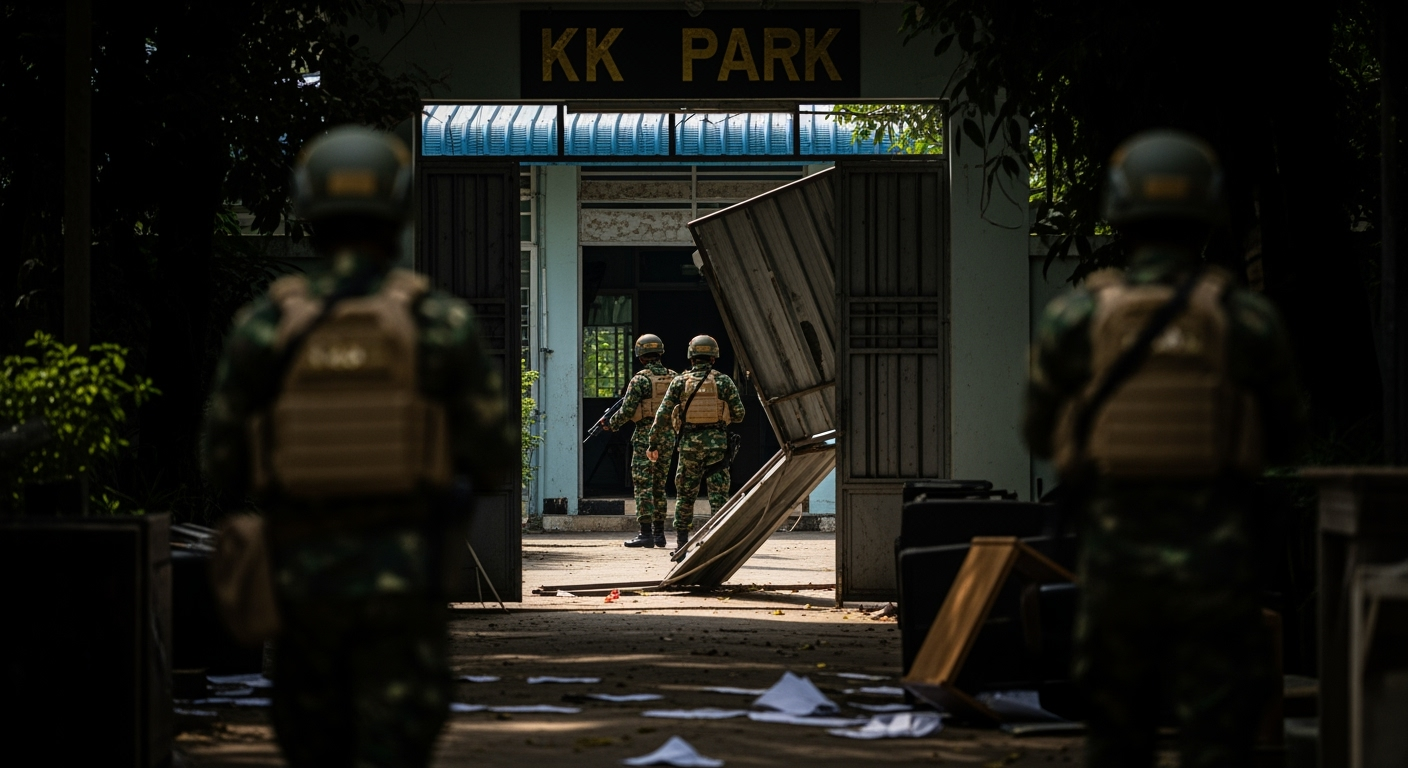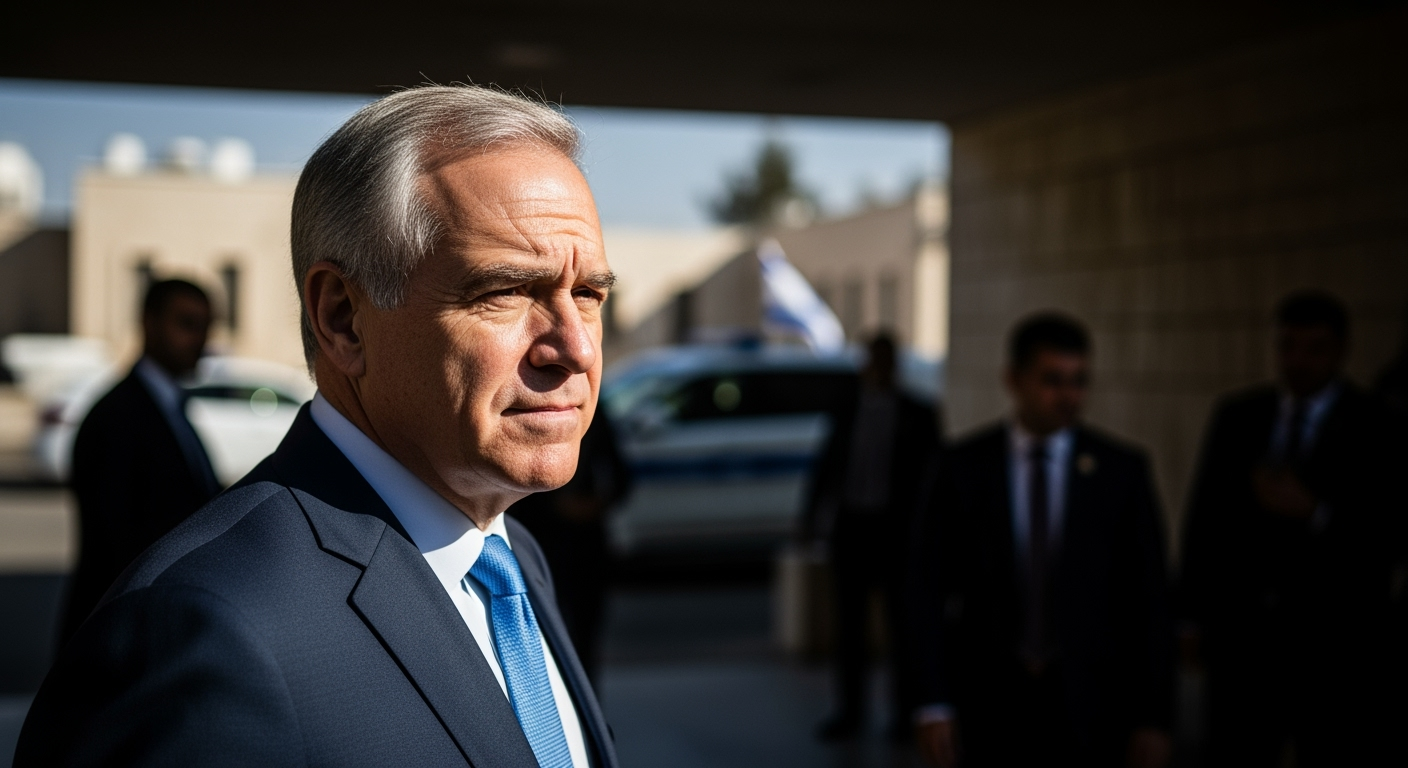Related Articles

Chess World Mourns Loss of Grandmaster Daniel Naroditsky at 29

Virginia Giuffre's Posthumous Memoir Intensifies Pressure on Prince Andrew and British Monarchy





Jerusalem – United States Vice President J.D. Vance arrived in Israel today on a high-stakes diplomatic mission, aiming to bolster a fragile ceasefire between Israel and Hamas that has been severely tested by recent escalations. His visit underscores the international community’s growing anxiety over the stability of the truce and the escalating humanitarian crisis in the Gaza Strip, where a declared famine threatens millions. With tensions running high and both sides accusing the other of violations, Vance faces the daunting task of pushing negotiations forward to secure remaining hostages and avert a return to full-scale conflict.
The Vice President's visit, part of a broader push by the Trump administration, comes as the recent US-brokered ceasefire, which took effect on October 10, 2025, struggles to maintain its precarious hold. Just days prior to Vance’s arrival, a surge in violence saw Israel launch retaliatory airstrikes in Gaza following an attack that killed two Israeli soldiers. While Israel attributed the incident to Hamas operatives, the Palestinian militant group vehemently denied involvement, pointing fingers back at Israel for what it claims are numerous breaches of the agreement since its inception. This fresh wave of hostilities, which reportedly claimed the lives of dozens of Palestinians, has cast a long shadow over the future of peace efforts, reminding all parties of the immense challenges in transforming a cessation of hostilities into a durable resolution.
The current ceasefire represents a critical, albeit vulnerable, achievement forged through intensive mediation by the United States, Egypt, and Qatar. Initially outlined in a three-phase plan, the agreement aimed to end the prolonged conflict that began with Hamas's devastating October 7, 2023, attack on Israel, which resulted in approximately 1,200 deaths and the capture of 251 hostages. The subsequent Israeli military offensive led to widespread destruction across the Gaza Strip and the deaths of over 67,000 Palestinians, with more than 169,000 injured by early October 2025.
The first phase of the truce stipulated a partial withdrawal of Israeli forces, a surge of humanitarian aid into Gaza, and the exchange of Israeli hostages for Palestinian detainees. While some progress has been made, the implementation of the agreement's subsequent phases remains fraught with contention. A primary sticking point revolves around the demand for Hamas to disarm and for a complete Israeli withdrawal from Gaza – conditions Israeli Prime Minister Benjamin Netanyahu has repeatedly underscored as non-negotiable for lasting peace. Hamas, however, has expressed serious reservations about relinquishing its arms, further complicating the path to a comprehensive settlement. Vance's mission is to navigate these deep-seated disagreements and to impress upon both Israeli and Palestinian leadership the urgent need for adherence to the ceasefire's terms to prevent a full-blown relapse into conflict.
Beneath the political and military wrangling lies a humanitarian catastrophe of unprecedented scale unfolding across the Gaza Strip. A famine was officially declared by the Integrated Food Security Phase Classification (IPC) in the Gaza Governorate on August 22, 2025, and projections indicate it will likely spread to other areas. The United Nations World Food Programme (WFP) reports that 2.1 million people face extreme hunger, with nearly half a million on the brink of mass starvation. Food supplies have been almost entirely depleted, the medical infrastructure is shattered, and essential items like infant formula are completely unavailable.
Despite the ceasefire, the inflow of humanitarian aid remains critically insufficient. The WFP notes that while deliveries have increased, only about 750 metric tons of food enter Gaza daily, far short of the 2,000 metric tons required to meet the population's needs. Only two border crossings are currently operational, none providing direct access to the famine-stricken northern regions. The United Nations Relief Chief, Tom Fletcher, has outlined a 60-day plan to address the crisis, emphasizing the necessity of more crossings, rapid and unimpeded access for aid convoys, consistent fuel entry, and the restoration of vital infrastructure. The UNRWA, a key provider of assistance, has been unable to bring in aid for over seven months and exhausted its food stocks in April. The dire conditions have led to a surge in mass casualty events, with Red Cross field hospitals reporting an unprecedented rise in patients, predominantly suffering from gunshot wounds.
The instability in Gaza casts a long shadow over regional security, with international mediators cautioning against a return to open warfare. The prolonged conflict has had far-reaching consequences, including increased tensions with other regional actors and groups, some of whom have linked prospects for de-escalation to an end to Israeli military operations in Gaza. The diplomatic efforts led by Vice President Vance, alongside the ongoing involvement of US special envoy Steve Witkoff and presidential advisor Jared Kushner, reflect a concerted international push to de-escalate the situation and pave the way for a more stable future.
However, the path forward is complex. Beyond the immediate ceasefire, talks are anticipated to address the long-term governance of Gaza and the crucial issue of Hamas's demilitarization. These are monumental challenges, given Hamas's historical stance and Israel's security imperatives. The international community, including key mediators like Qatar, is urging both sides to adhere to the agreement and demonstrate genuine commitment to peace. Yet, with lingering distrust, accusations of violations, and the immense human suffering, the diplomatic journey remains fraught with obstacles, demanding persistent engagement and unwavering resolve from all involved.
Vice President J.D. Vance's visit to Israel arrives at a pivotal moment, as the fragile Gaza ceasefire hangs by a thread. His presence signifies the United States' commitment to salvaging a peace process that is vital not only for Israelis and Palestinians but for broader regional stability. The immediate challenge lies in de-escalating current tensions and ensuring strict adherence to the truce, particularly concerning the delivery of life-saving humanitarian aid to a population gripped by famine. The longer-term prospects for peace hinge on resolving fundamental disagreements over Gaza's future governance and the disarmament of militant factions. As diplomatic efforts intensify, the international community watches anxiously, hoping that dialogue can prevail over renewed conflict and lay the groundwork for a more secure and humane future in the embattled region.